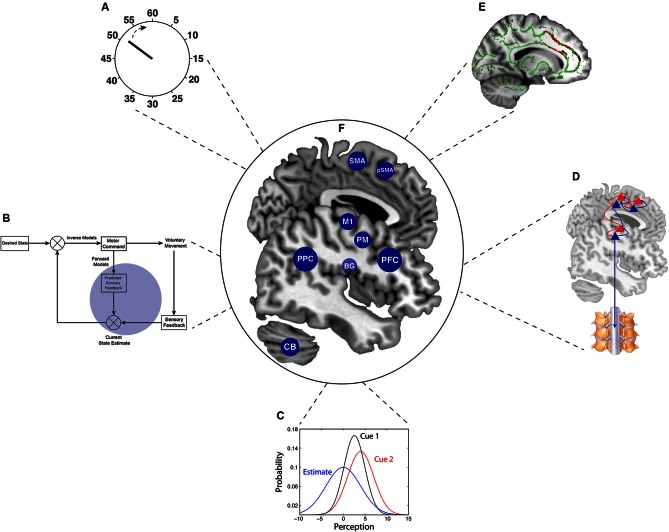Figure 1.
Summary of the key theoretical concepts and neuroanatomy in the study of agency. This review describes some of the key emerging neuroscientific concepts that have facilitated the acquisition of more objective measures in agency research. (A) The “clock” represents developments cognitive neuroscience paradigms, particularly the chronometric approach for volition that is embedded in Libet’s paradigm and in “intentional binding”. (B) Comparator model of agency within optimal motor control theory (enlarged in Figure 2). (C) Precision-dependent cue integration, following optimal Bayesian integration. (D) The recently developed theory of active inference, implementing Bayesian principles for voluntary action (enlarged in Figure 3). (E) Combination of structural and functional neuroimaging (inset adapted from Wolpe et al., 2014), which when considered together with these behavioral paradigms, provides a powerful tool for linking behavior to its underlying brain mechanisms. (F) The central brain illustration depicts the critical brain areas for voluntary action, which are alluded to in this Review. BG = basal ganglia; CB = Cerebellum; M1 = primary motor cortex; PFC = prefrontal cortex; PM = Premotor cortex; PPC = posterior parietal cortex; pSMA = pre-supplementary motor area; SMA = supplementary motor area.

